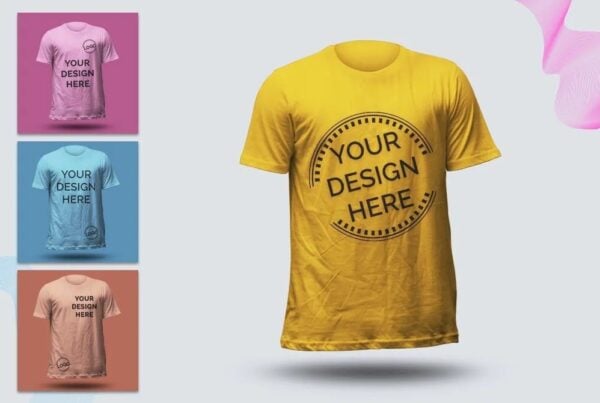Disclosure Sponsored Links: This post contains a paid-for sponsored link, meaning we have received compensation in exchange for including it. Sponsorship does not influence our content, but we believe in transparency regarding paid placements.
In the dynamic landscape of contemporary e-commerce, differentiation is key to creating a memorable brand experience amidst competitors. A powerful strategy for achieving this lies in the meticulous curation of product collections that transcend mere showcases, offering customers a captivating journey. This post delves into the efficacy of the Print on Demand (POD) approach in crafting such collections. By harnessing the versatility of POD, businesses can tailor unique offerings that resonate with their brand identity, fostering an immersive customer experience. Explore how this approach not only sets you apart in the market but also establishes a lasting impression that resonates with the ever-evolving expectations of today’s discerning online shoppers.
Table of Contents
Understanding Print on Demand
Print on Demand business follows a production method where products are printed when customers place orders. Unlike manufacturing processes that involve production and inventory management, POD allows businesses to produce unique products on demand, eliminating the need for excessive stock and reducing financial risk. This flexible approach has gained popularity in many sectors, including fashion, homeware, and accessories.
Benefits of Embracing the POD Approach
Incorporating the POD approach into your collection strategy offers many advantages. Firstly, it enables customisation options. With POD, you can offer a range of designs and variations tailored specifically to customer preferences. By tapping into emerging trends or niche markets, you can successfully target customer segments.
Moreover, it is increasingly important for businesses to adopt sustainable production practices in order to attract eco-conscious consumers. The use of the POD model can significantly reduce waste by producing items when they are needed. This eco-friendly approach helps address concerns about inventory and the disposal of products.
Creating Coherent Product Collections
When building product collections using the POD model, it is essential to ensure cohesion in order to establish trust with customers. This means that each item within the collection should be connected and reflect your brand identity effectively.
Visual Elements
Successful collections maintain consistency across all items while still allowing for individual expression. This can be achieved through various choices such as colour palettes or iconography styles, ensuring that customers can instantly recognise the association between the collection and your brand.
Theme-Based Collections
Organising products into theme-based collections enhances the customer experience by creating a narrative. For instance, a collection inspired by nature could feature patterns or illustrations on products. By telling a story, these collections evoke emotions and provide customers with a unique experience.
Designs
Crafting collections with cohesive designs encourages customers to explore and purchase multiple items. Ensuring seamless synergy in both aesthetics and functionality enhances perceived value, fostering customer loyalty. This thoughtful curation not only elevates the overall shopping experience but also establishes a lasting connection with customers, contributing to sustained satisfaction and increased brand affinity.
Personalisation Choices
Empowering customers to personalise products within a collection strengthens their connection to your brand. Whether it’s incorporating names and initials or choosing from an array of features, providing customisation options enriches the customer experience. This not only adds a unique touch to their purchase but also instils a sense of involvement in the creative process, fostering a deeper and more meaningful relationship with your brand.
Collaborations with Artists and Influencers
Teaming up with artists or influencers can bring perspectives to your collections. By partnering with individuals who align with your brand values, you not only expand your reach but also introduce unique designs and styles that deeply resonate with customers.
The Advantage of Print on Demand
In embracing the print on demand (POD) approach for crafting product collections, businesses open avenues for innovation while minimising risks. Print on demand technologies provide a nimble framework, enabling experimentation with designs that can swiftly adapt to ever-changing market demands. This adaptability not only allows for the effective targeting of niches but also contributes significantly to waste reduction, aligning with sustainable practices.
Utilizing Data for Ongoing Enhancement
As the journey of developing and refining product collections unfolds with the POD approach, leveraging data becomes a crucial aspect of continuous improvement. Examining customer behaviour, encompassing purchasing habits, product preferences, and feedback on designs, yields valuable insights. These insights serve as a foundation for enhancing collections and tailoring them more precisely to meet the evolving expectations of the target audience.
Monitoring Sales and Customer Feedback
A strategic imperative lies in vigilant monitoring of sales data to identify the standout performers within collections. Understanding which designs or variations resonate most with customers equips businesses to make informed decisions for collection planning. This data-driven approach ensures a focus on items in high demand, optimising inventory management and customer satisfaction. Beyond sales metrics, actively encouraging customers to provide feedback, be it through reviews or surveys, offers invaluable insights into their experiences and preferences, aiding in the continual refinement of collections.
A/B Testing for Iterative Design
A potent tool within the POD framework is A/B testing, facilitating iterative design improvements. This involves presenting different design choices to a subset of customers and measuring their preferences or conversion rates in real time. The dynamic nature of A/B testing allows for quick adjustments based on customer feedback, ensuring that collections evolve in sync with the ever-shifting preferences of the target audience. This iterative process not only refines the aesthetic appeal of collections but also aligns them more closely with the desires of the discerning consumer.
Conclusion
In today’s consumer landscape, where authenticity and building connections with brands go beyond models, creating cohesive product collections plays a crucial role in engaging customers and fostering brand loyalty.
By adopting the POD approach (Print on Demand) when designing and producing these collections, you can unleash your creativity while meeting customer expectations for customisation and sustainability.
Go ahead and let your brand’s story come to life by creating curated product collections that make an impact on every customer who engages with them. It’s even more impressive when you have the option to customise and print them as you please!








